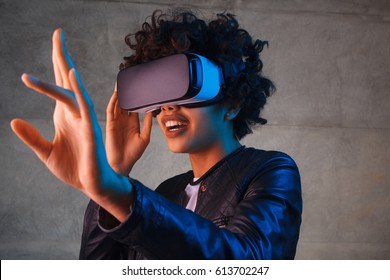First of all, let’s start off by explaining what a dream is. Dreams are a succession of events, images or scenarios that occur involuntarily in our minds as we pass across the “stages of sleep”. Dreams can trigger sensations and emotions that can linger even after you wake up.
What are the stages of sleep?
Basically, there are four(4) stages of sleep, one of which involves rapid eye movement(REM) and three others involve non-rapid eye movement(NREM).
STAGE 1 (NREM)– This is the first stage of sleep, a person can easily be woken up in this stage. If there is no disturbance or noise, the person can move into stage two within 5-10mins.
STAGE 2 (NREM)– Most people spend half their sleep in stage 2. In this stage the body and muscles relaxes, and the body temperature reduces.
STAGE 3 (NREM)– This is the stage that gives our body the feeling of satisfaction, it is the most important stage of sleep. In stage 3, the pulse drops and the body relaxes even further. It is more difficult to wake a person up during this stage.
STAGE 4 (REM)– Rapid eye movement occurs during this stage of sleep. The brain activity picks up almost as if you’re awake. Dreams are most common in this stage. It is also solely responsible for lucid dreaming.
What is a Lucid Dream?
A lucid dream occurs when you’re conscious in a dream. This means, you are fully aware that you’re dreaming and in some cases you can even manipulate your dream. Sounds almost like virtual reality but far more complex. This is the fun part, everyone has surely experienced this but sometimes they may not remember once they’re awake. During a lucid dream, you can change the environment you see yourself, literally anything you can mentally create becomes possible. That’s just how powerful the human mind is.
Explaining Virtual Reality
Virtual reality does not really need much explanation. In a nut shell, VR is a computer generated simulation where the user can interact with a 3D environment using electronic devices. like the image below;


LUCID DREAMING VS VIRTUAL REALITY
Both lucid dreaming and virtual reality offer unique and immersive experiences, but they differ in several key aspects:
Nature of Experience:
- Lucid Dreaming: This is a natural phenomenon that occurs during sleep. It’s a state where you become aware that you’re dreaming and can sometimes control the dream’s content.
- Virtual Reality: VR is a technology-driven experience. It uses computer-generated simulations to create a three-dimensional environment that users can interact with using special equipment like VR headsets.
Control and Interaction:
- Lucid Dreaming: The level of control in a lucid dream can vary. Some people are able to actively manipulate their dreams, while others may only be aware that they’re dreaming without being able to change anything.
- Virtual Reality: VR provides a consistent level of interaction, as users can control their movements and actions within the virtual environment using controllers or motion sensors.
Accessibility:
- Lucid Dreaming: Lucid dreaming is a skill that can be developed with practice, but not everyone may be able to experience it. It requires no external equipment, just the ability to enter a specific state of consciousness while sleeping.
- Virtual Reality: VR requires specific hardware, such as a VR headset and controllers, and often a computer or gaming console to run the software. This can make it less accessible to some due to the cost and technical requirements.
Purpose and Application:
- Lucid Dreaming: Lucid dreaming is often used for personal exploration, problem-solving, creativity, and even therapeutic purposes, such as treating nightmares.
- Virtual Reality: VR has a wide range of applications, including entertainment (like gaming and virtual tours), education, training simulations, and therapeutic uses (such as exposure therapy for phobias).
Sensory Experience:
- Lucid Dreaming: The sensory experience in a lucid dream can be very vivid and realistic, involving all the senses, but it is generated entirely by the mind.
- Virtual Reality: VR provides a visually immersive experience, and with advancements in technology, it can also include auditory, haptic (touch), and even olfactory (smell) feedback to enhance realism.
Lucid dreaming only sends info to your brain, your body does not make any organized movement. In VR you are not just limited to brain signals but can actively interact with your environment. For example; lets say you’re having a lucid dream where you’re a warlord sword fighting your enemies, to anyone observing you, you’re just laying still on your bed. If you’re having this same experience in VR you’ll be swinging you’re arms and screaming at nothing to an observer.
In conclusion, while lucid dreaming and virtual reality both offer immersive experiences, they differ significantly in terms of their nature, control, accessibility, purpose, and sensory experience. Lucid dreaming is a natural, internal experience, while virtual reality is an externally created, technology-driven experience.
ARE THERE ANY SIDE EFFECTS OF LUCID DREAMING or VR?
For lucid dreaming, well, not really. The only known side effect is the fact that it messes with your sleep and can sometimes cause sleep paralysis. None of those are really a big problem. While both lucid dreaming and virtual reality are generally safe experiences, there are some potential side effects to be aware of:
Lucid Dreaming:
- Sleep Disruption: Frequent lucid dreaming can potentially disrupt your sleep cycle, leading to feelings of tiredness or sleepiness during the day.
- Sleep Paralysis: As you mentioned, lucid dreaming can sometimes be associated with sleep paralysis, which can be an unsettling experience. However, it’s generally harmless.
- Blurring of Reality: In very rare cases, frequent lucid dreaming might lead to confusion between dreams and reality, especially in individuals with certain mental health conditions.
Virtual Reality:
- Motion Sickness: Some users experience motion sickness or nausea when using VR, especially in simulations with a lot of movement.
- Eye Strain and Headaches: Prolonged use of VR headsets can cause eye strain and headaches in some individuals.
- Physical Injuries: There is a risk of bumping into objects or tripping while immersed in a VR environment, as you lose awareness of your physical surroundings.
- Desensitization: There’s a concern that prolonged exposure to certain VR content, such as violent games, might lead to desensitization to real-life violence, although more research is needed in this area.
Overall, while both lucid dreaming and virtual reality have some potential side effects, they are generally considered safe experiences. It’s important to use VR responsibly, taking breaks and ensuring a safe environment, and to practice lucid dreaming in moderation to avoid disrupting your sleep.








